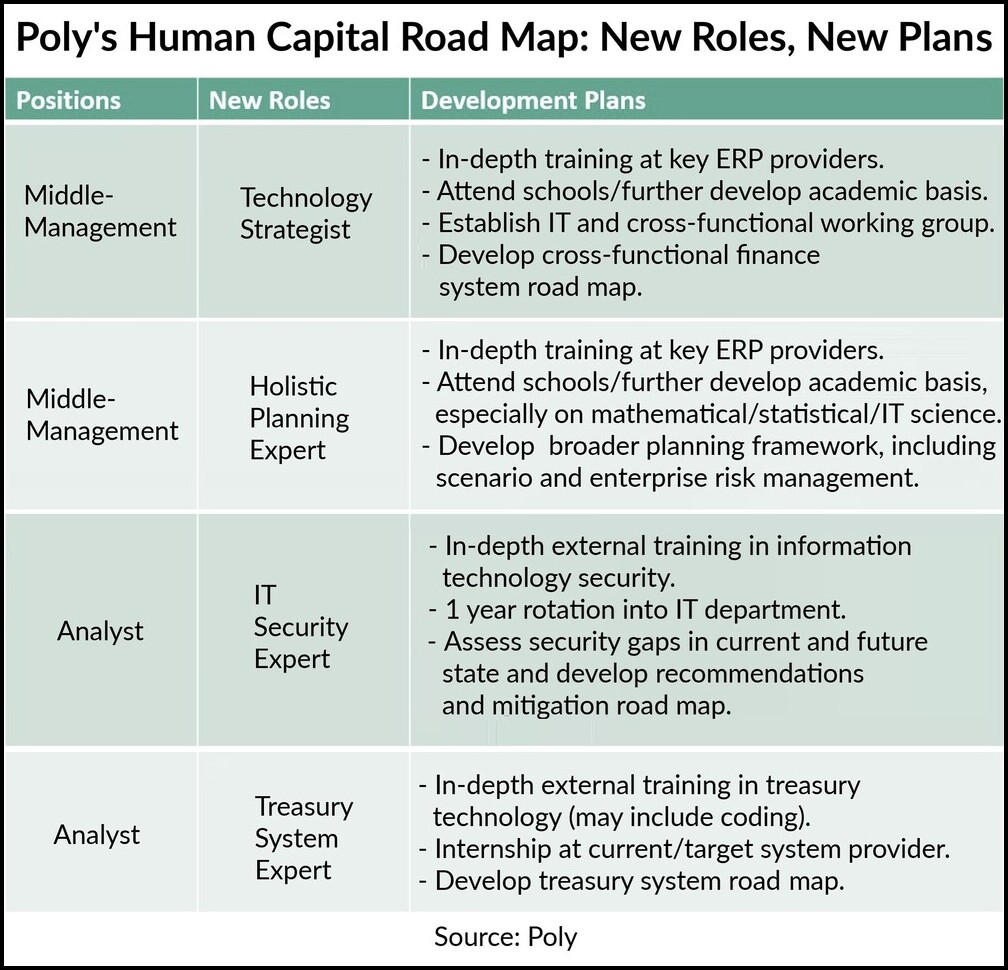
Technology holds the key to treasury transformation. So how can people on treasury teams add value in the future?
The strategic value that treasury teams provide to corporations depends in large part on the ability of finance leaders to adopt and adapt to technology that is transforming treasury while at the same time developing the skills and expanding the roles of the people on those teams.
- That takeaway surfaced during discussions on the future of treasury by Jean Furter, the treasurer of tech communications company Poly, and NeuGroup CEO Joseph Neu at fall meetings of NeuGroup for Growth-Tech Treasurers and NeuGroup for European Treasury.
People, technology and road maps. The interplay of people with technology that is automating, streamlining and eliminating tactical, routine tasks presents treasurers with an enormous challenge as they look ahead. One member called talent planning “massive” in terms of leading to value-added, strategic work. “Doing more than just KYC compliance tasks is definitely the way forward,” he said. But he is finding it difficult to manage that on a large scale.
- Mr. Furter suggests making a road map for “human capital” guided by developing trends. He said it is critical to start by benchmarking with peers and monitoring developments in technology. Then, he said, research and develop possible scenarios and quantify what the potential benefits and costs would be for each scenario.
- After researching and analyzing the scenarios, create functional road maps to embrace opportunities, which includes regular course corrections to employees’ job descriptions and skill set requirements—but only if the research proves the changes will justify the cost.
- In his case, Mr. Furter converted middle-management positions to technology and planning specialists, as well as turning broad “analyst” roles into specific IT security and TMS experts (see below).

Treasury’s future size. What’s impossible to know precisely is how this ongoing transformation will alter the size of treasury teams. Mr. Neu believes there’s a good chance that treasurers will have half as many employees undertaking current tasks within a few years, with the other half “now doing much more that adds tremendously more value.”
- He added, “That justifies not only the head count spend but the technology and resource spend. It’s not about doing less, but adding to the resource base as we roll into the future.”
- Mr. Furter, meanwhile, said that while treasury team members working in Power BI and writing Python scripts or Excel macros are useful now, he believes that in the future AI will become better and faster than people, even at putting together the programs in the first place. Employees will need to adapt their skills to maintaining these systems, rather than building them.
- Even so, he estimates that 90% of current treasury jobs will ultimately be eliminated, and many current skill sets will become obsolete. Mr. Neu emphasized that he believes the need is not to eliminate roles—it’s to expand and enhance them by freeing up time to create value.


